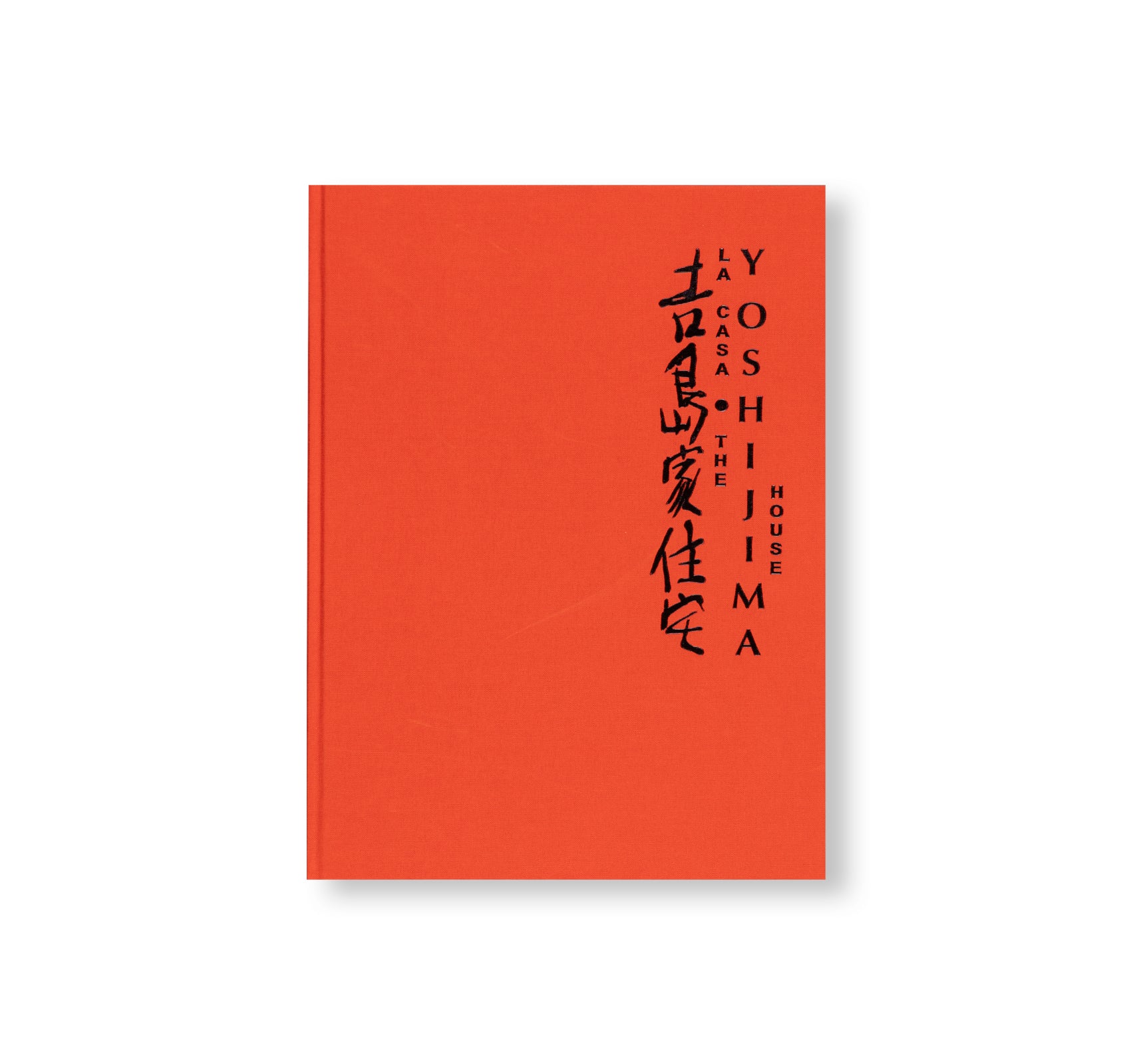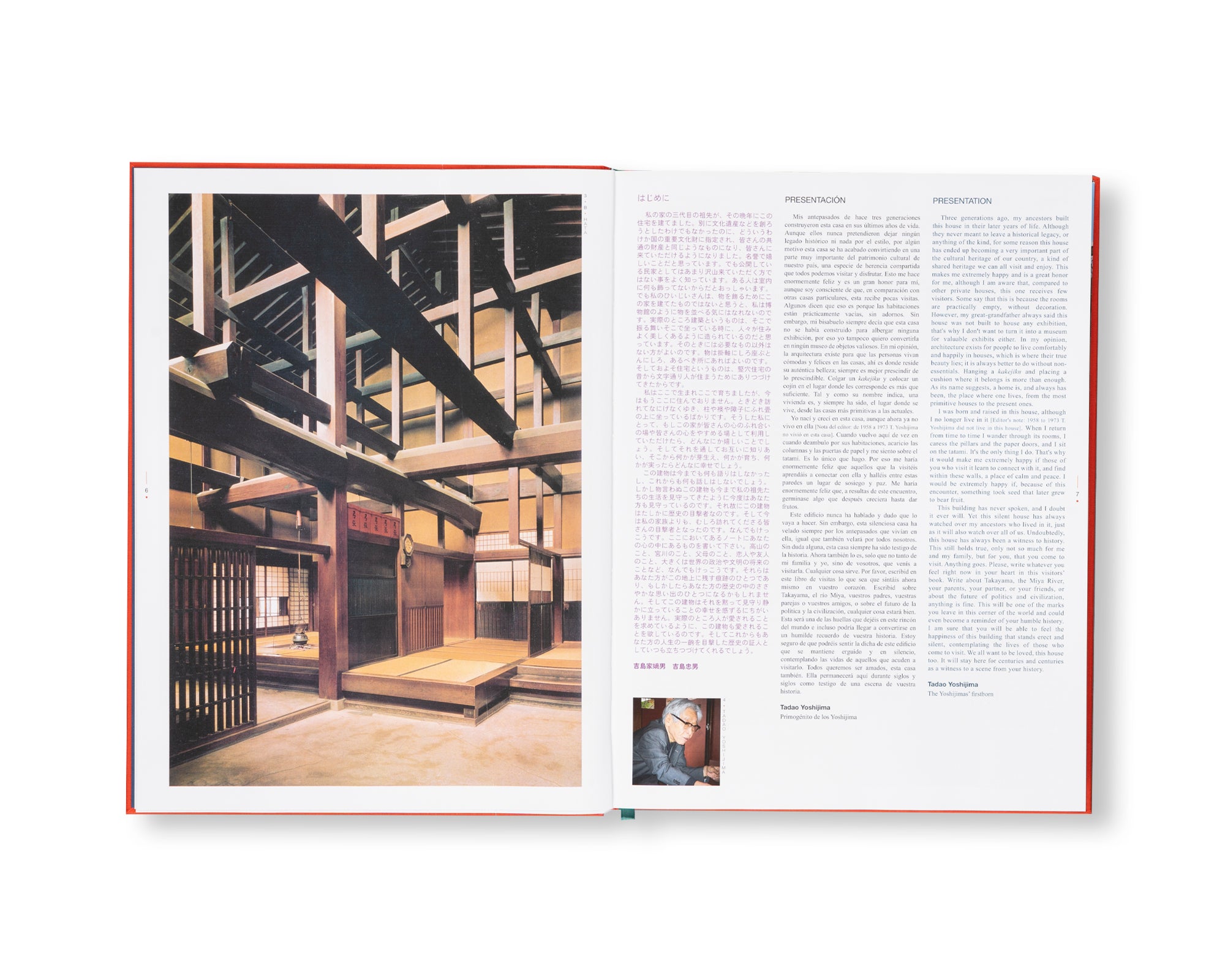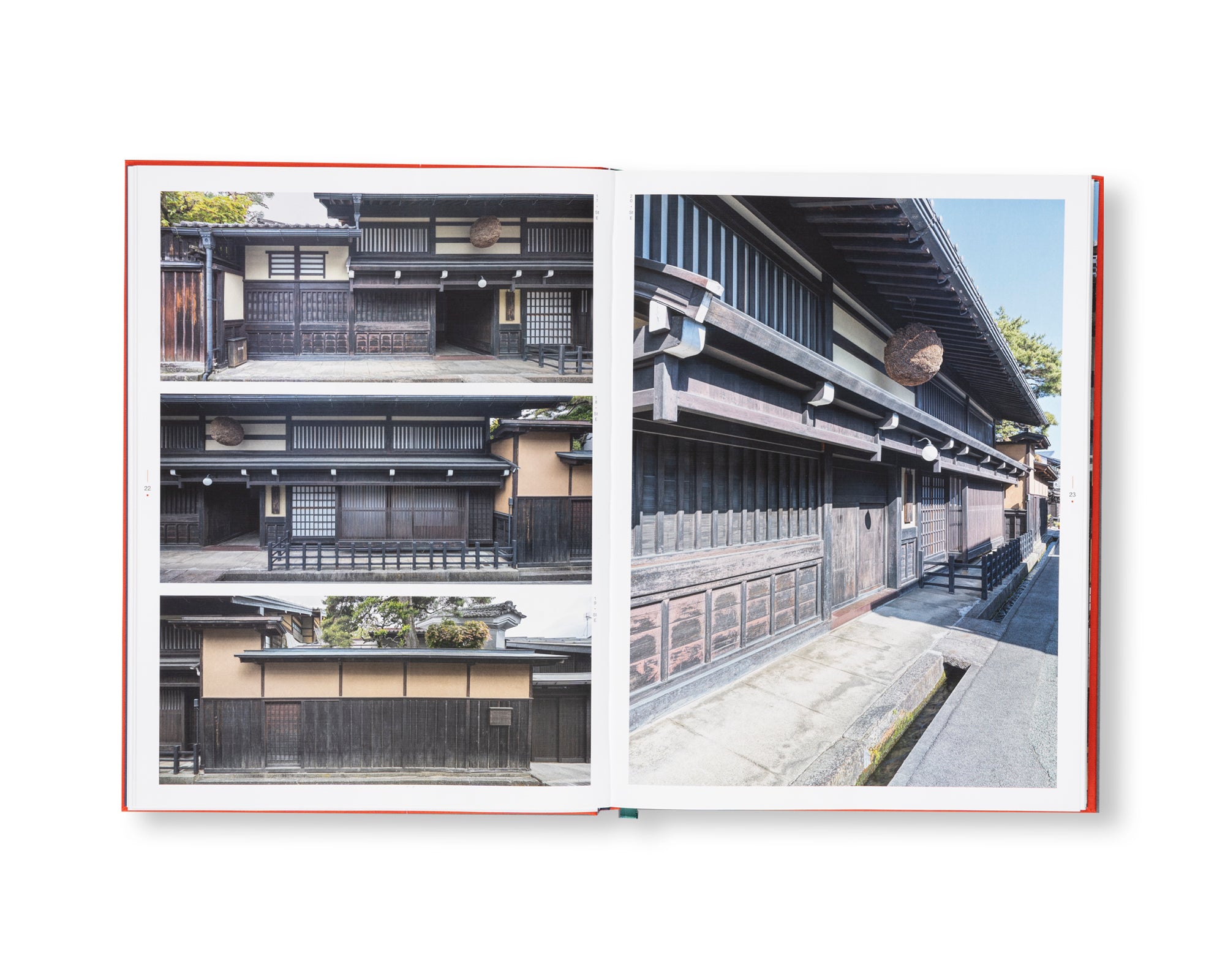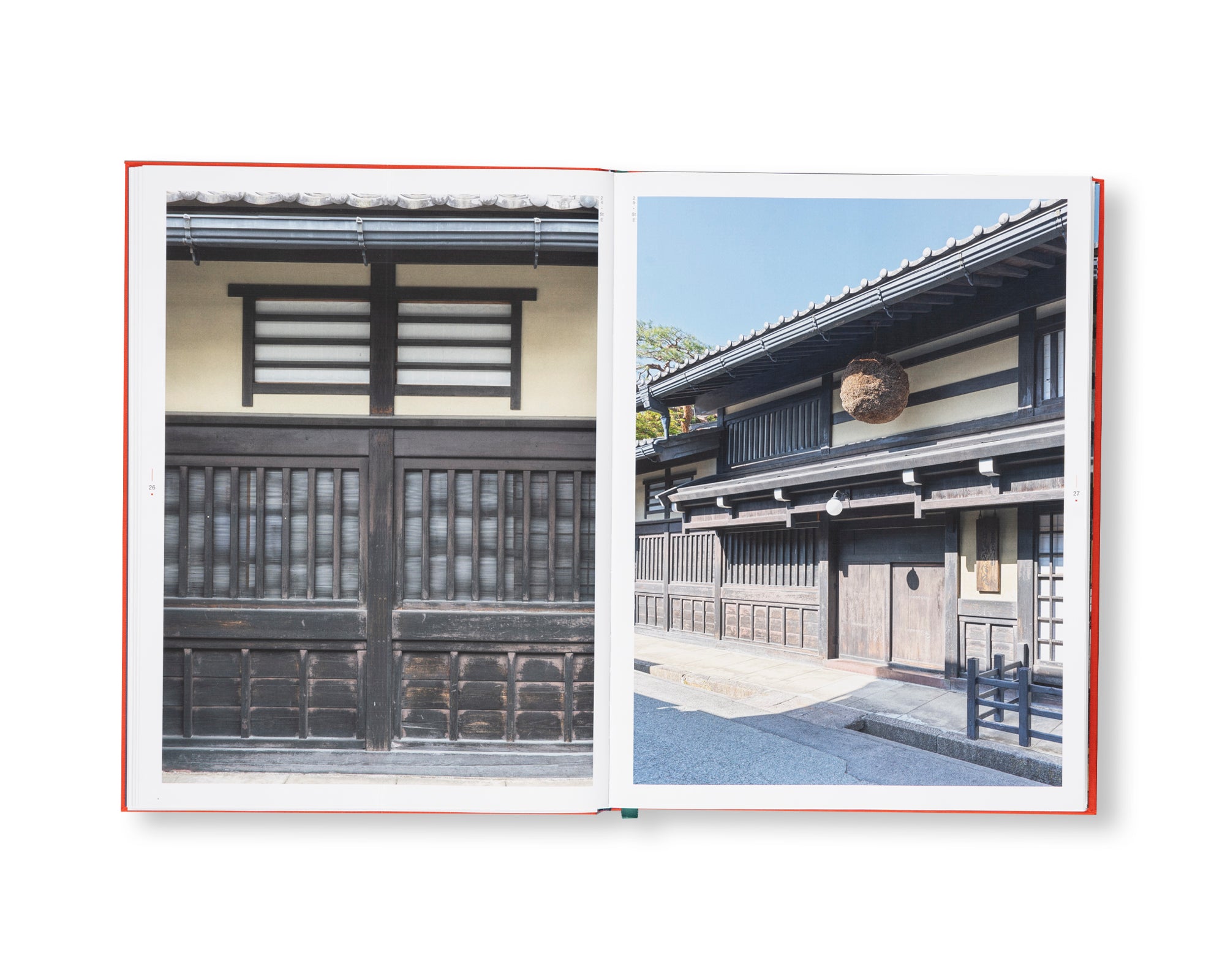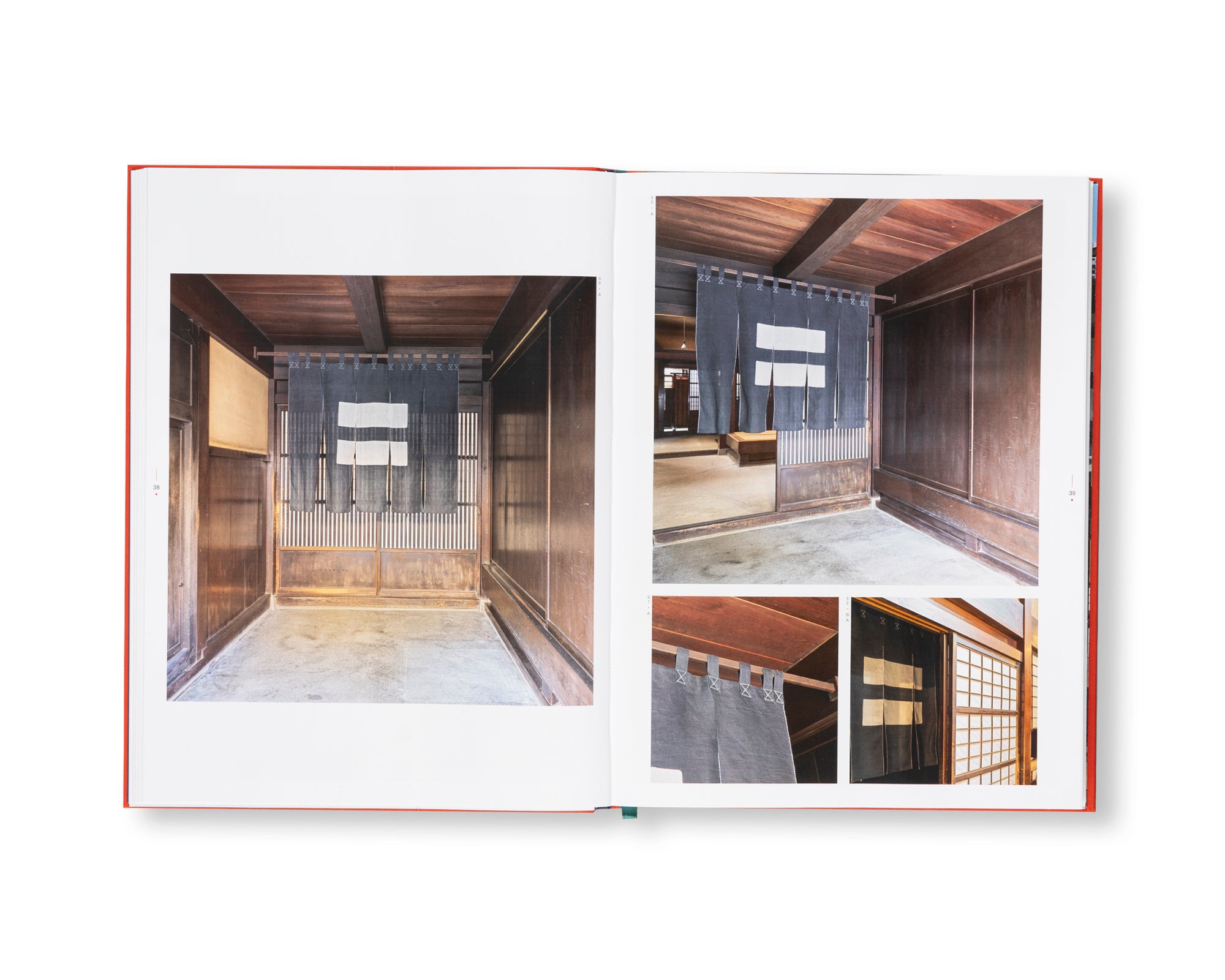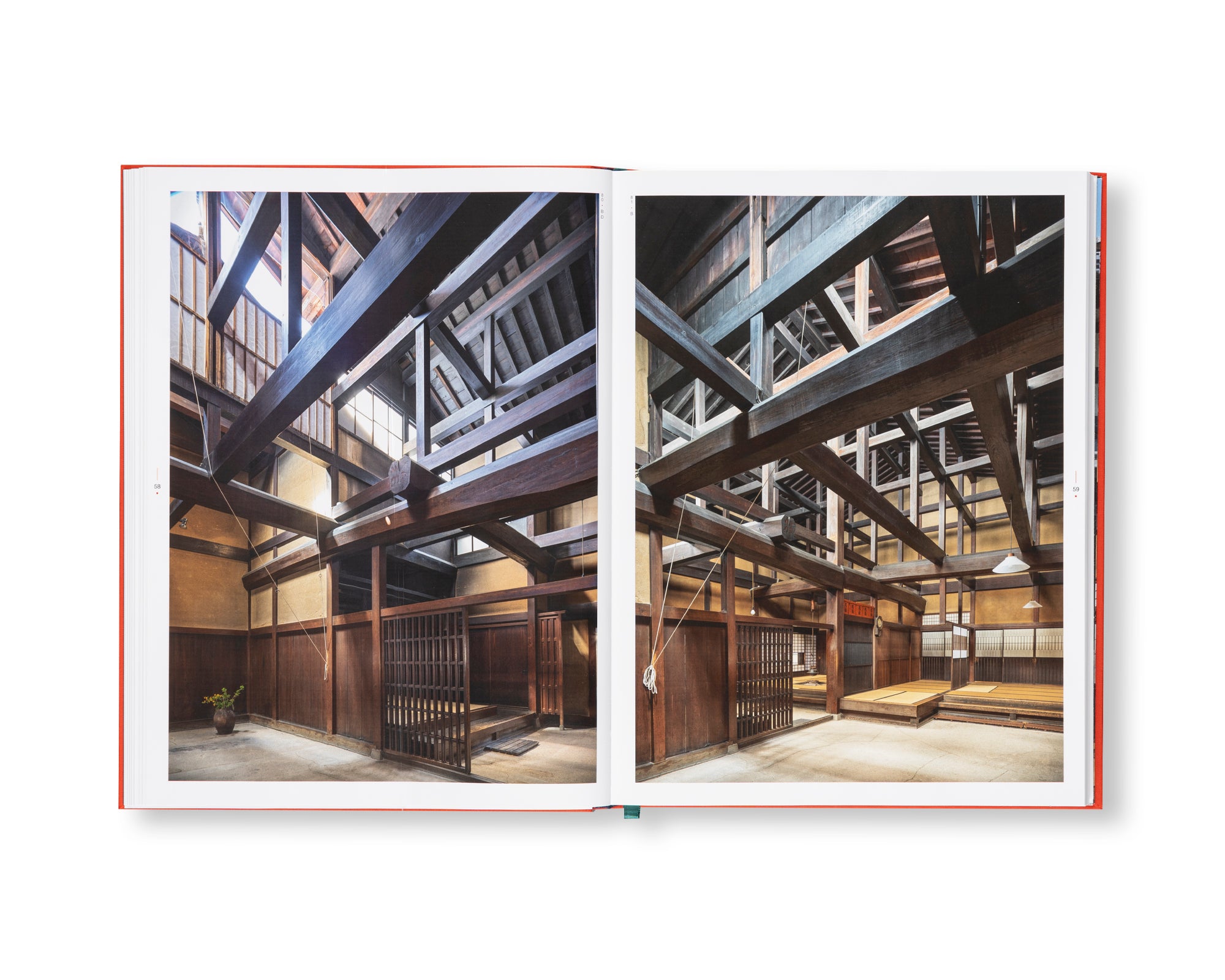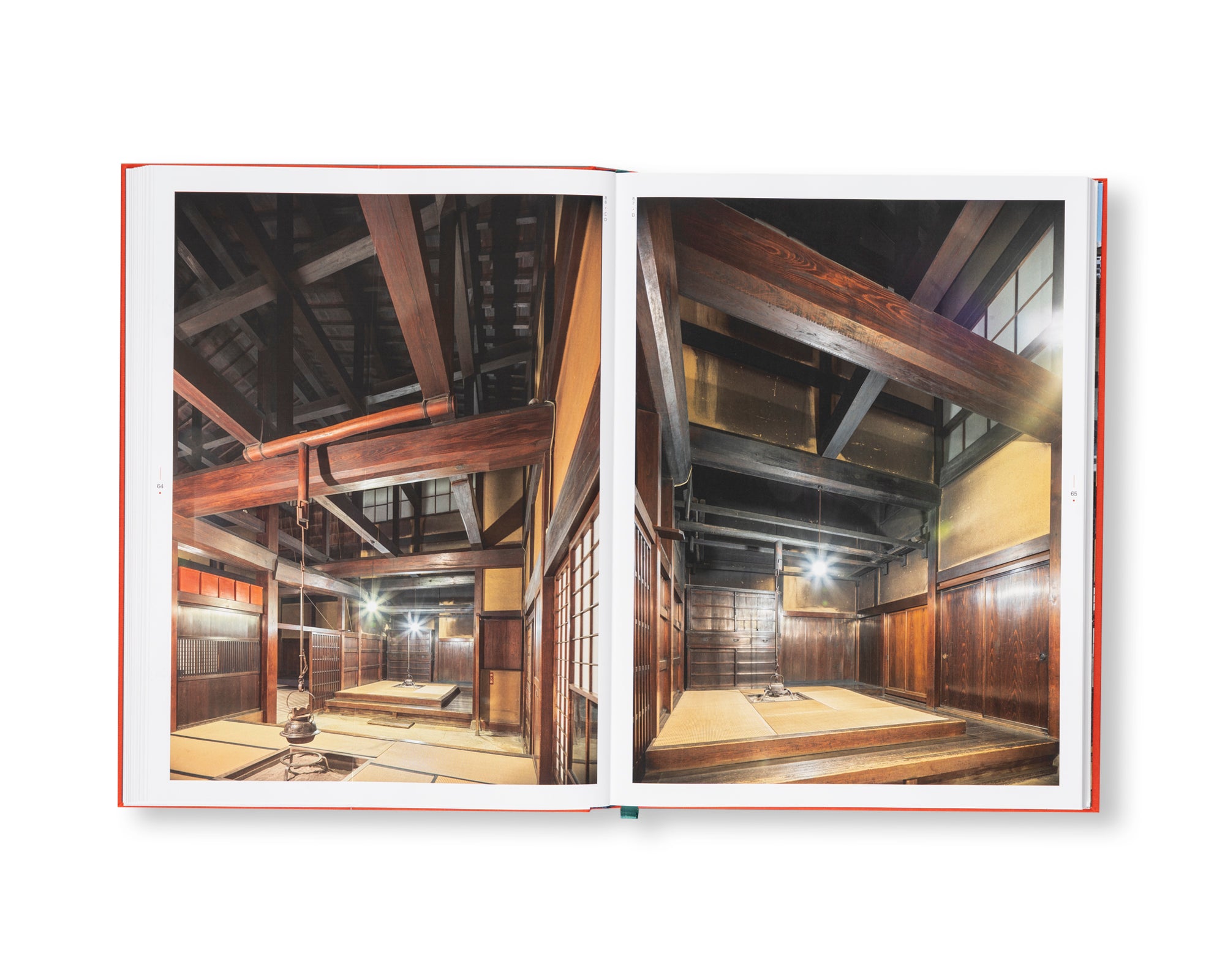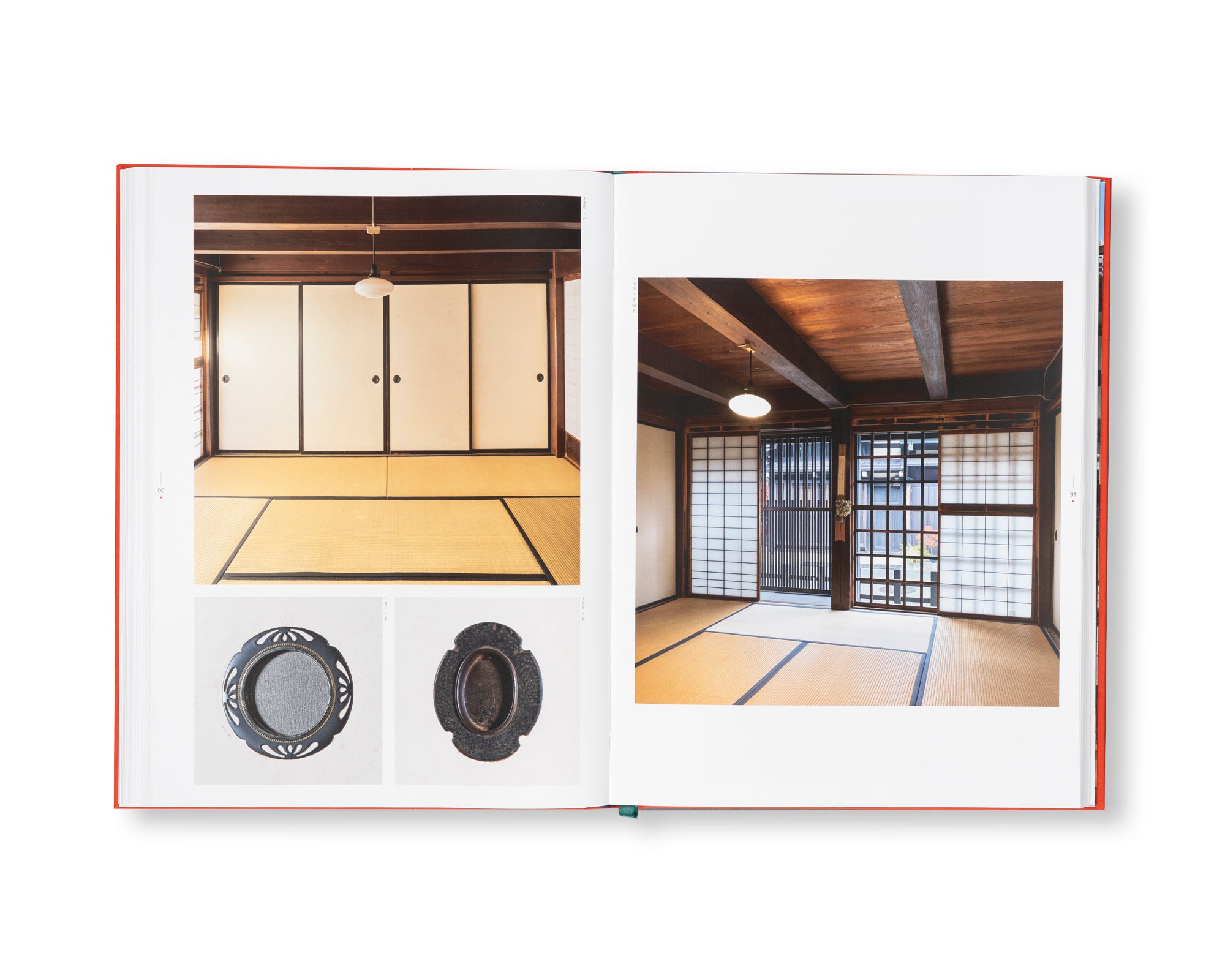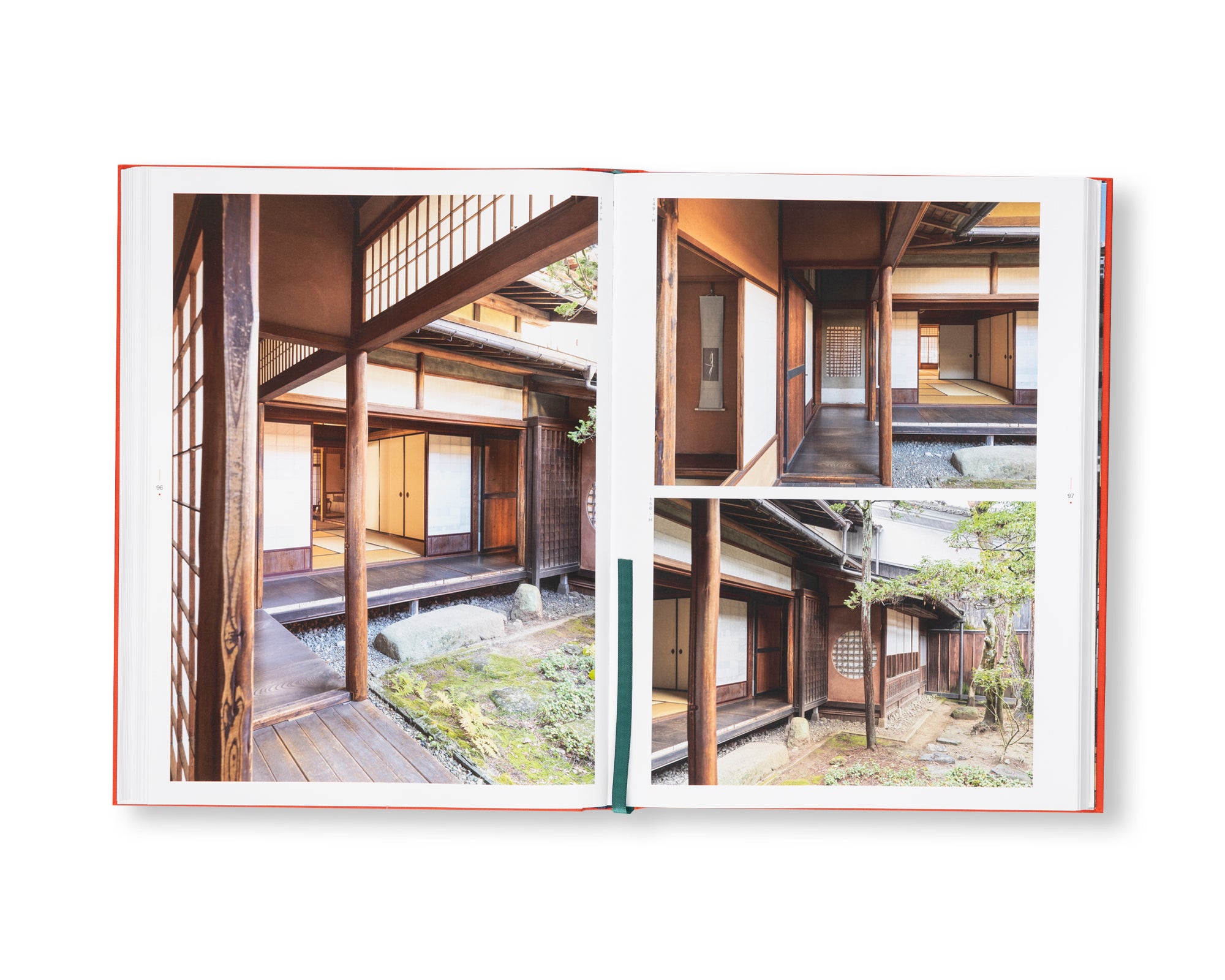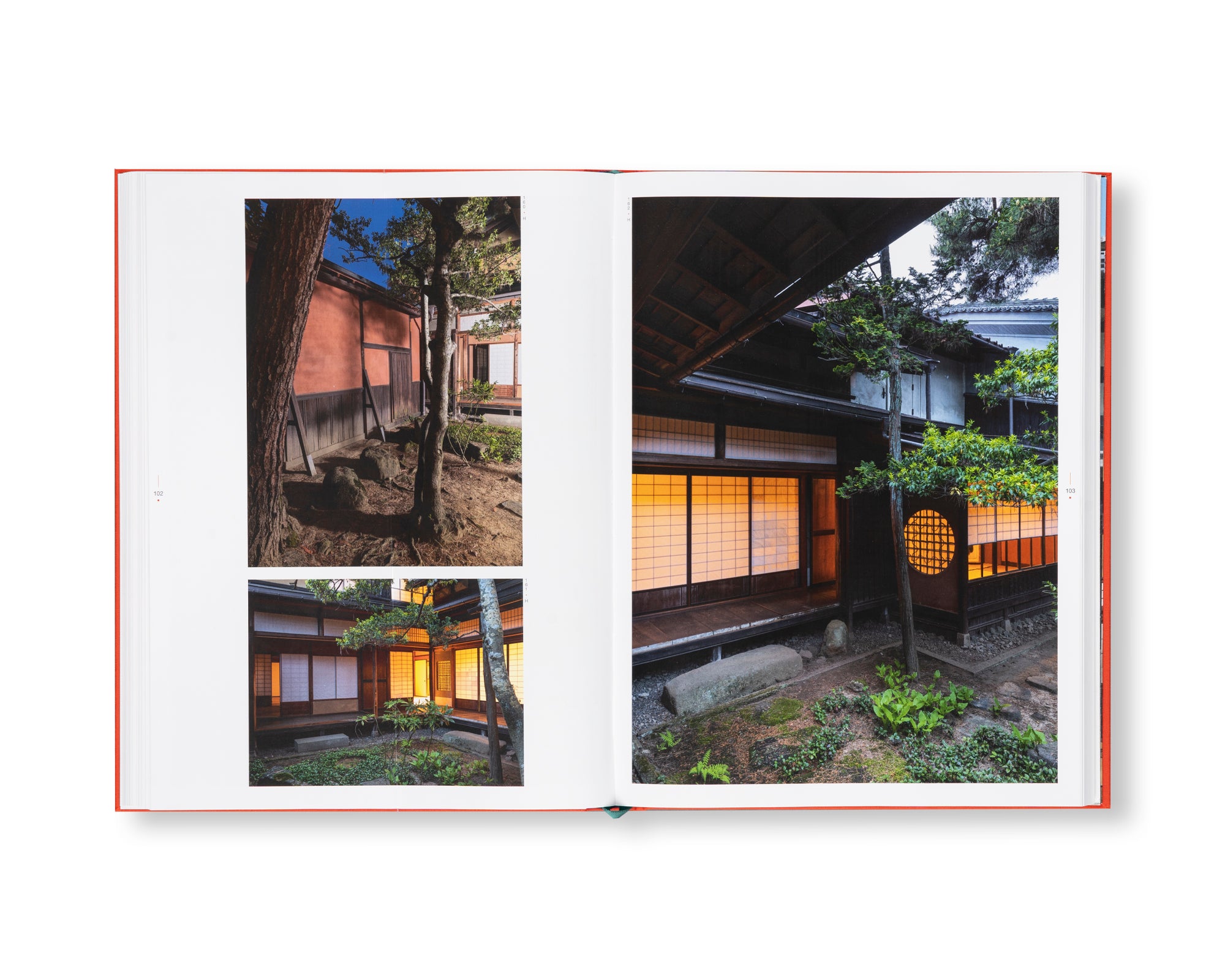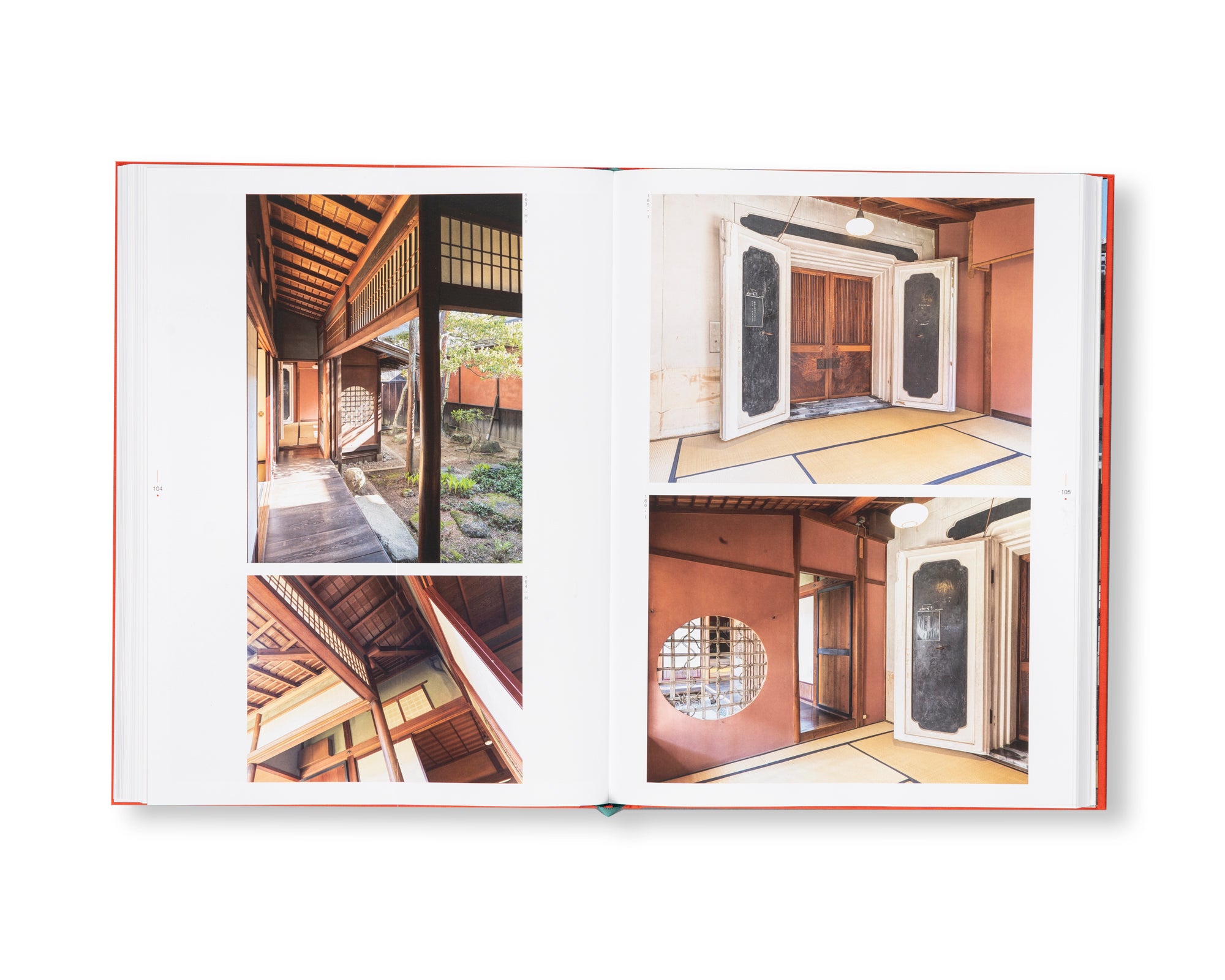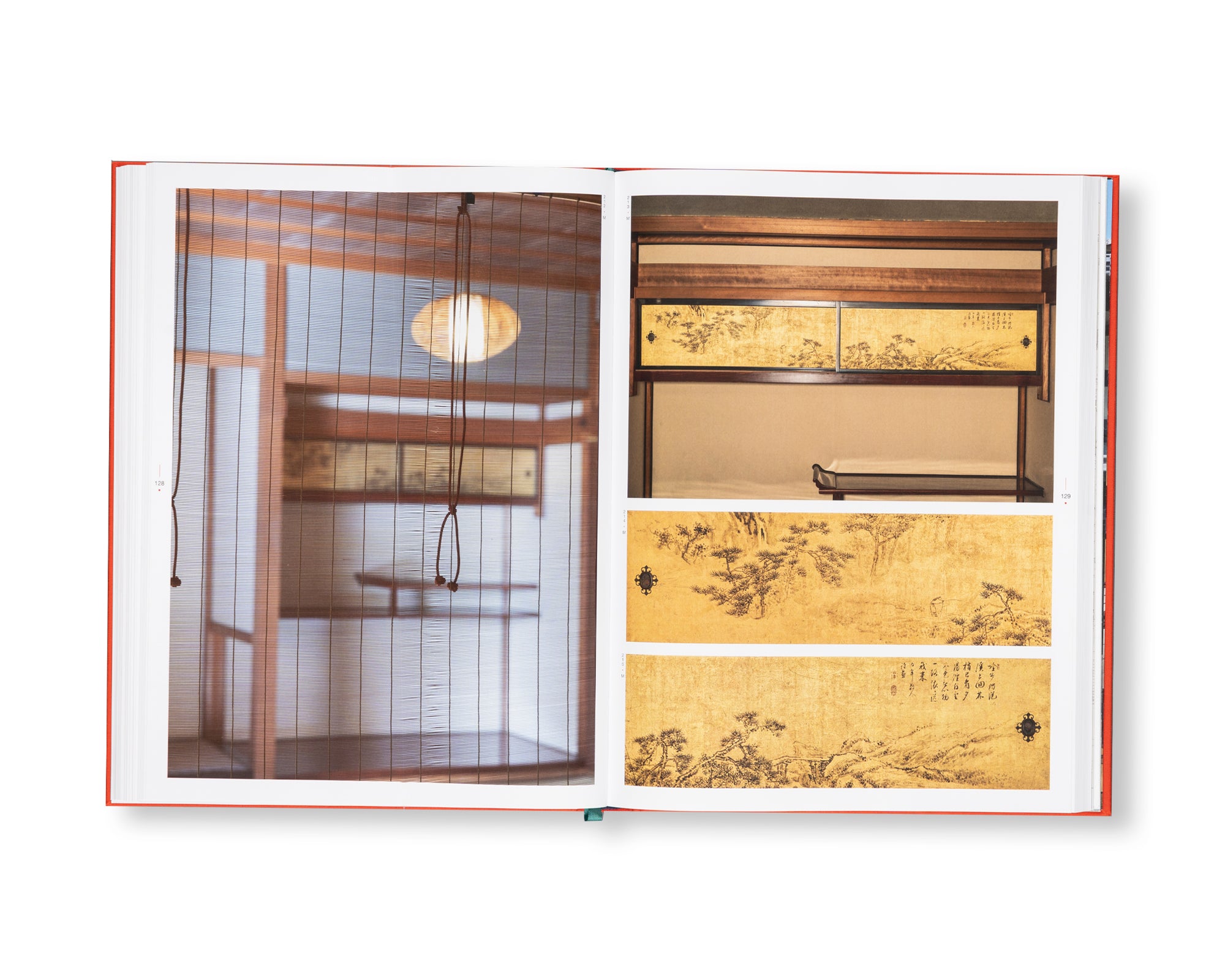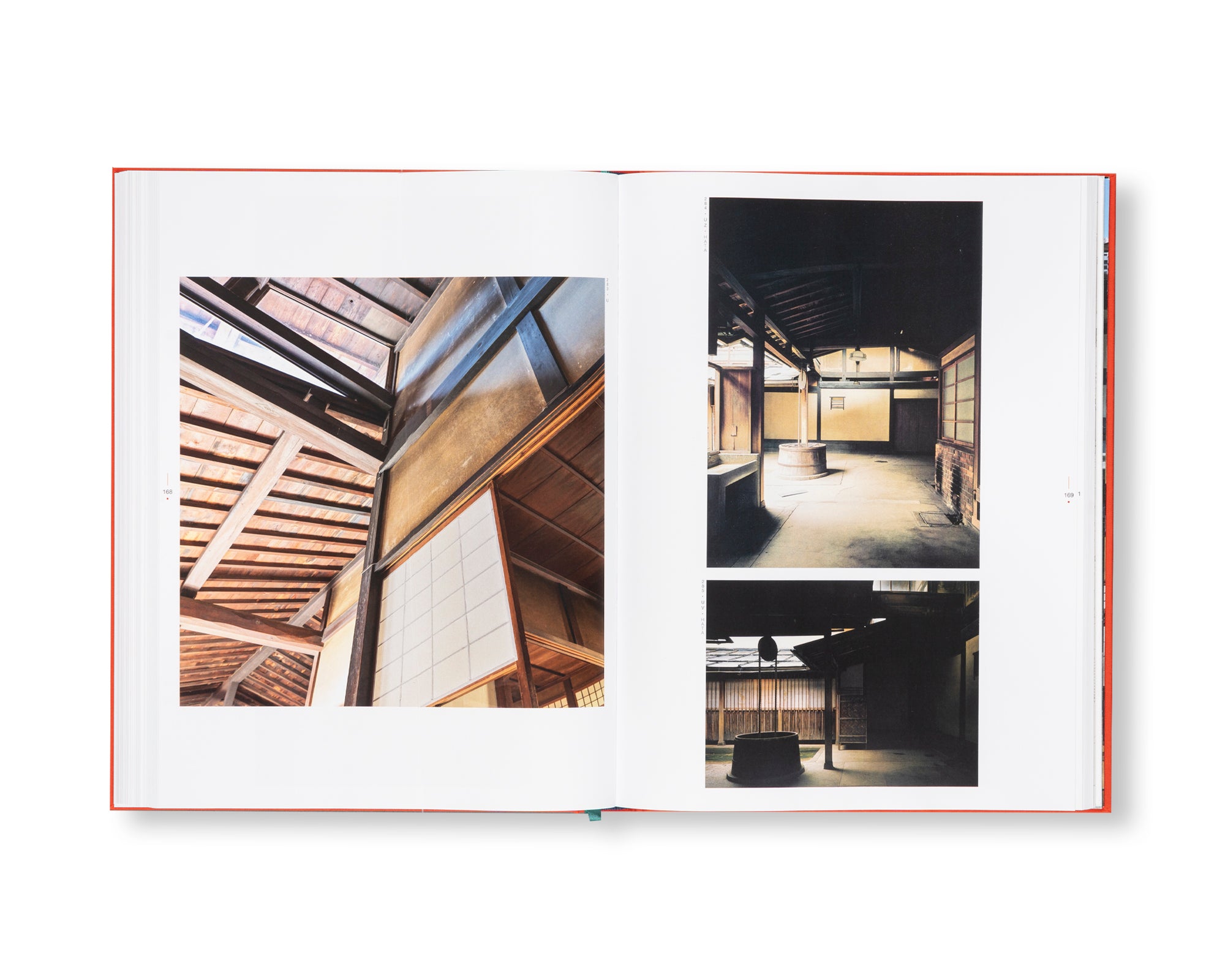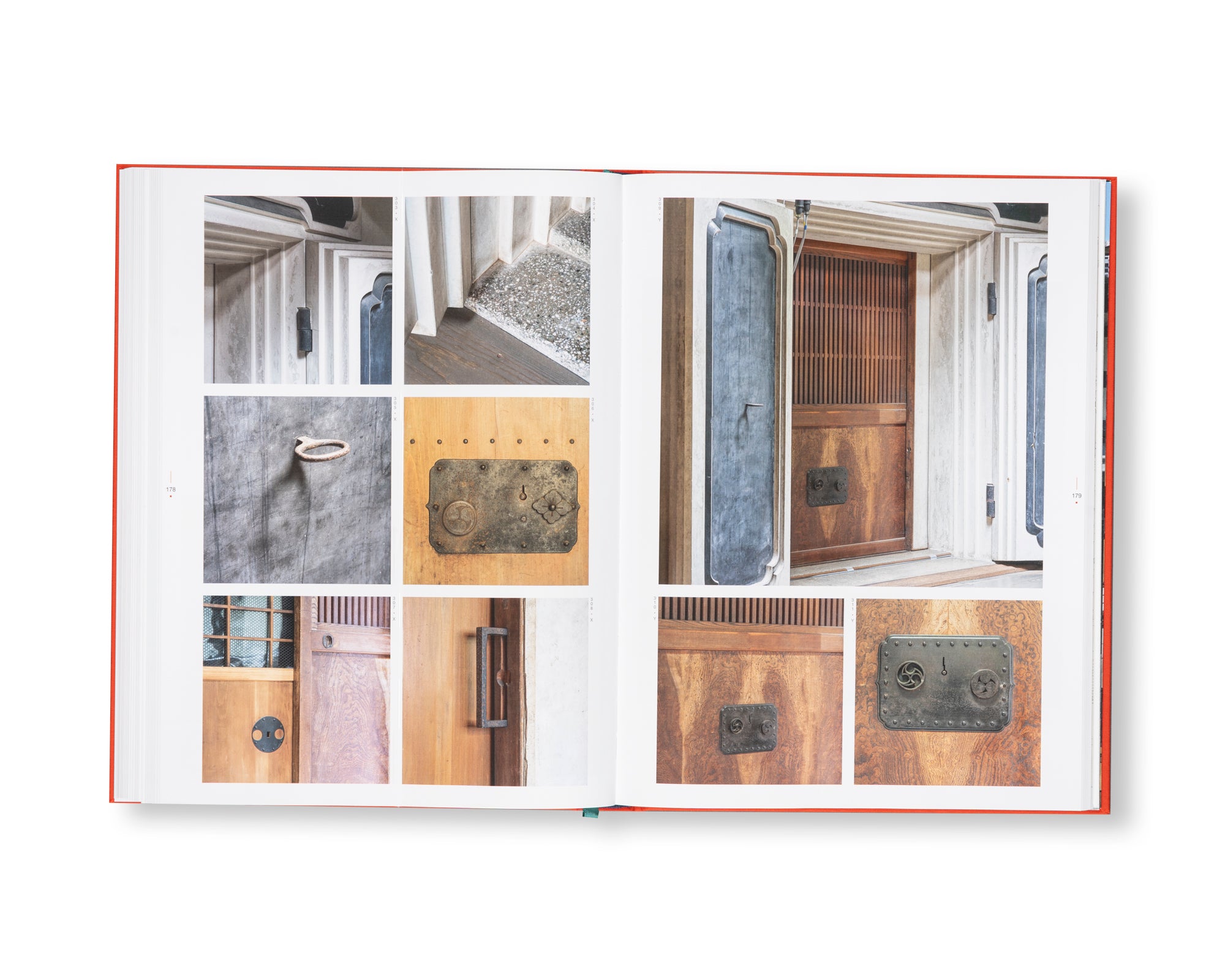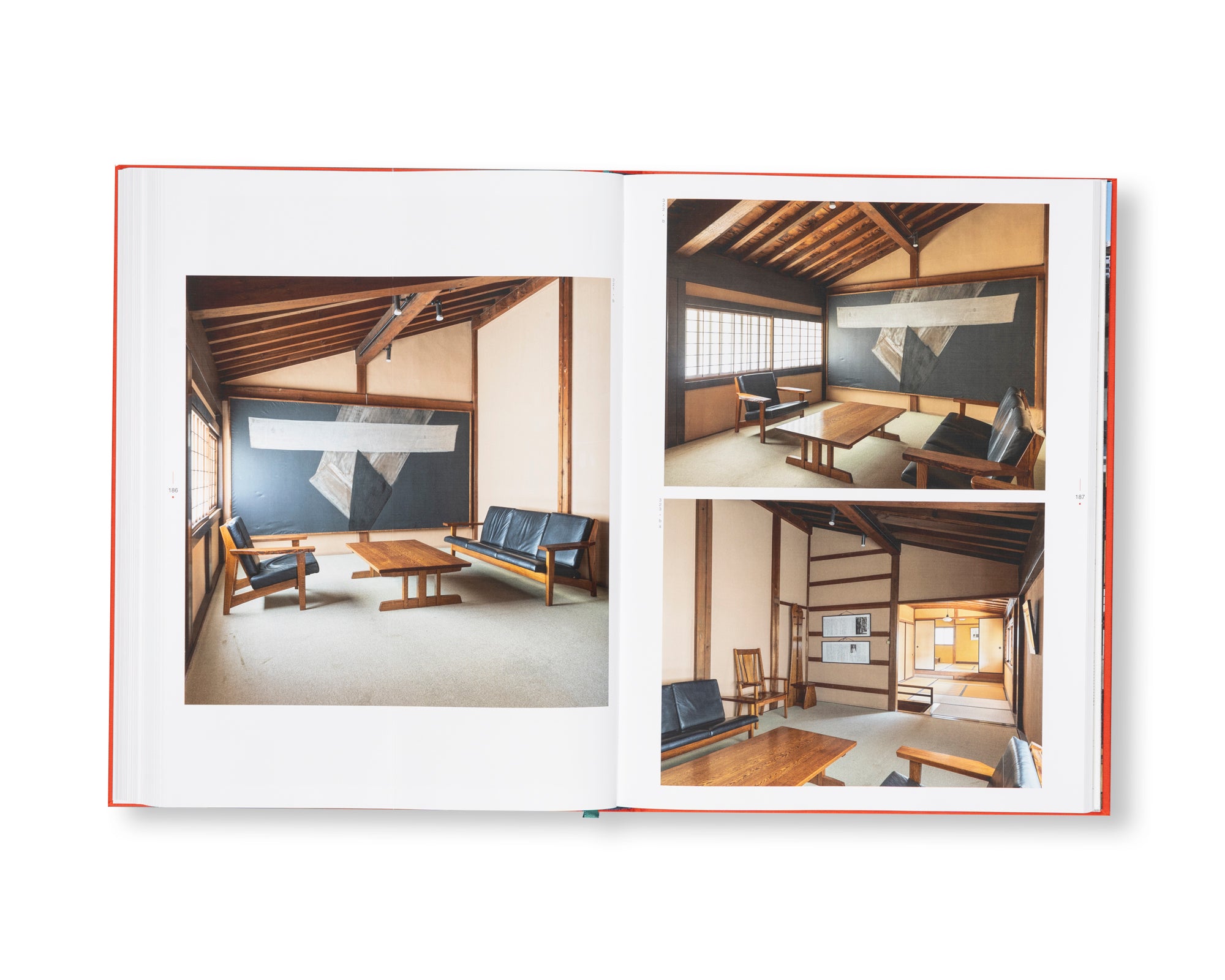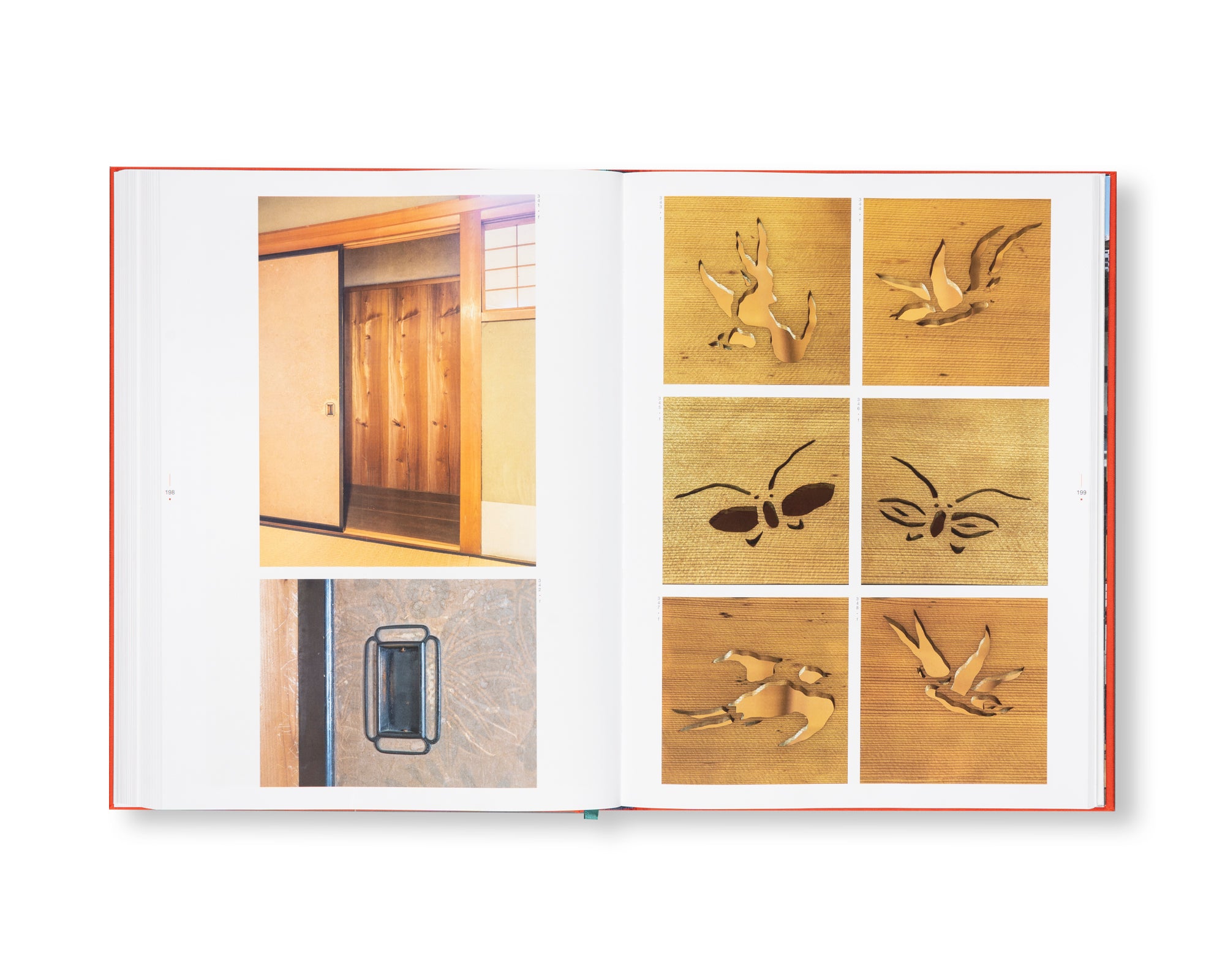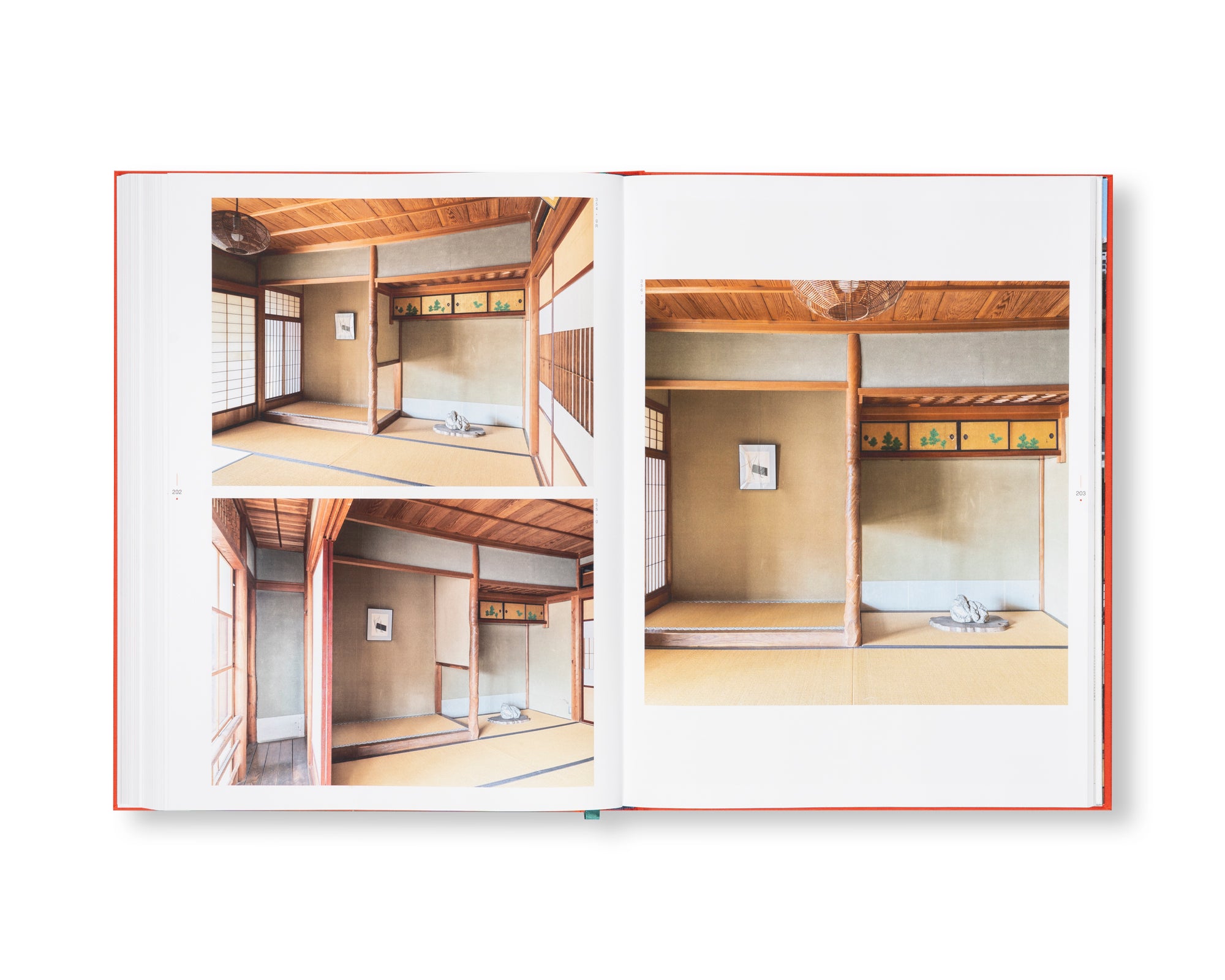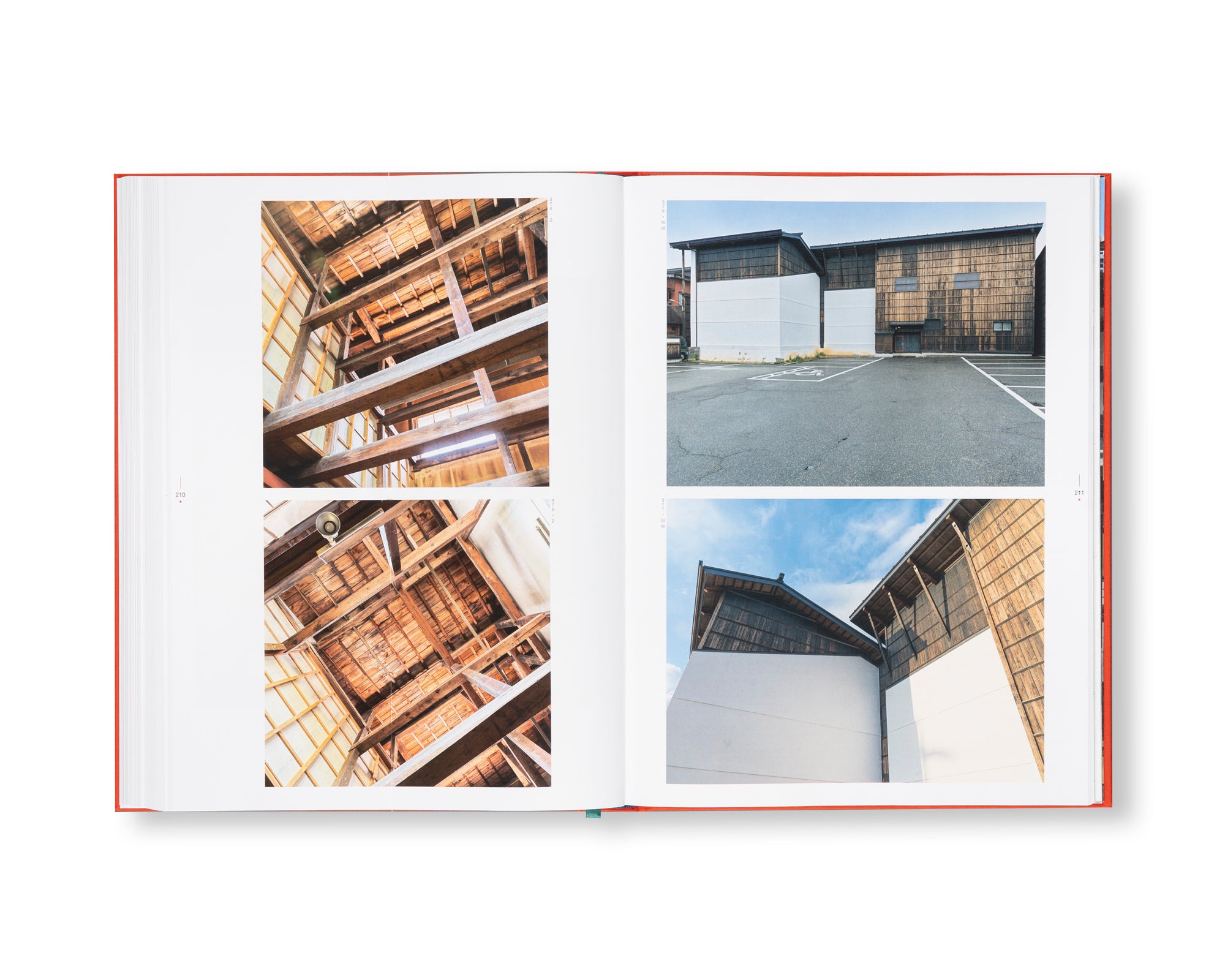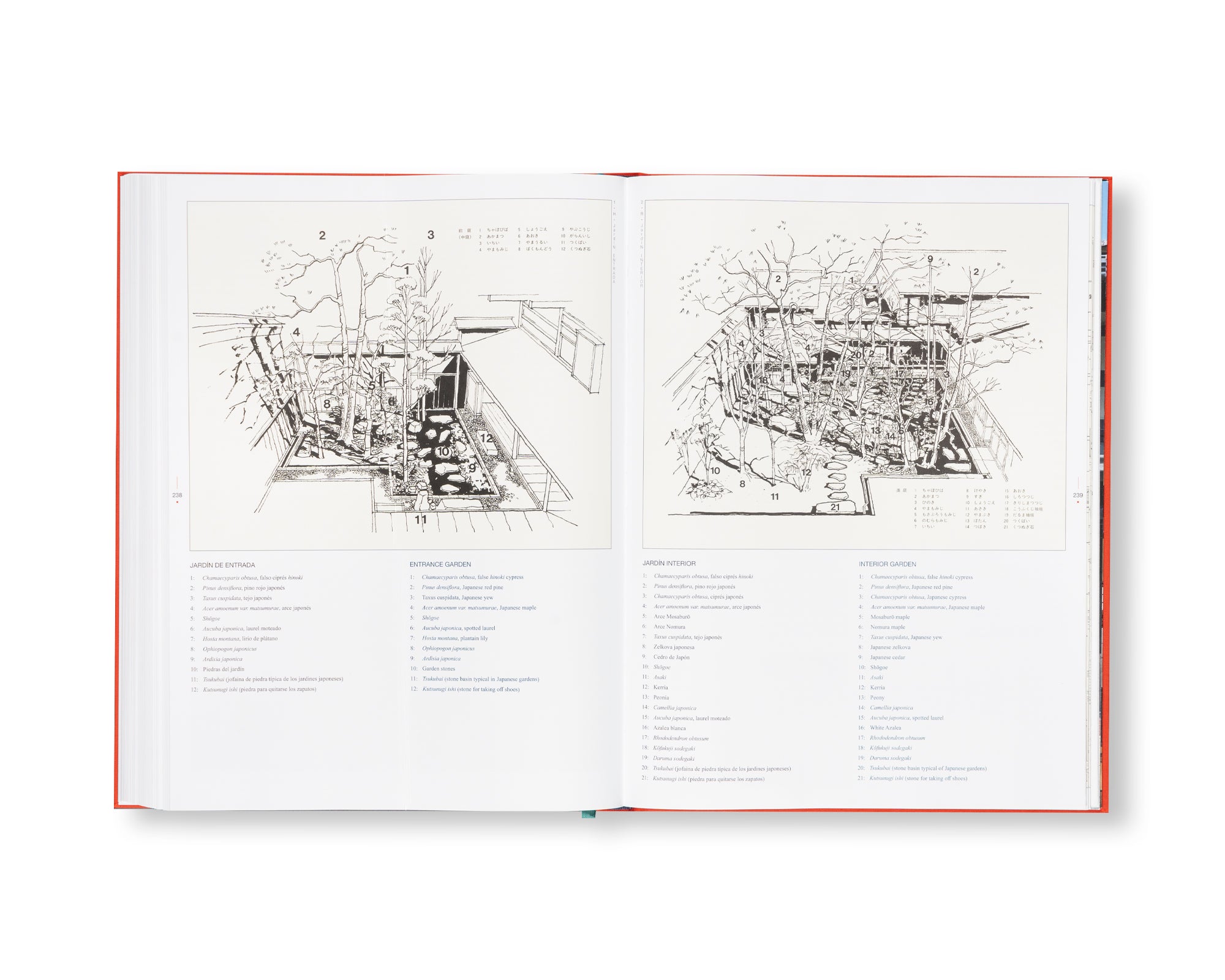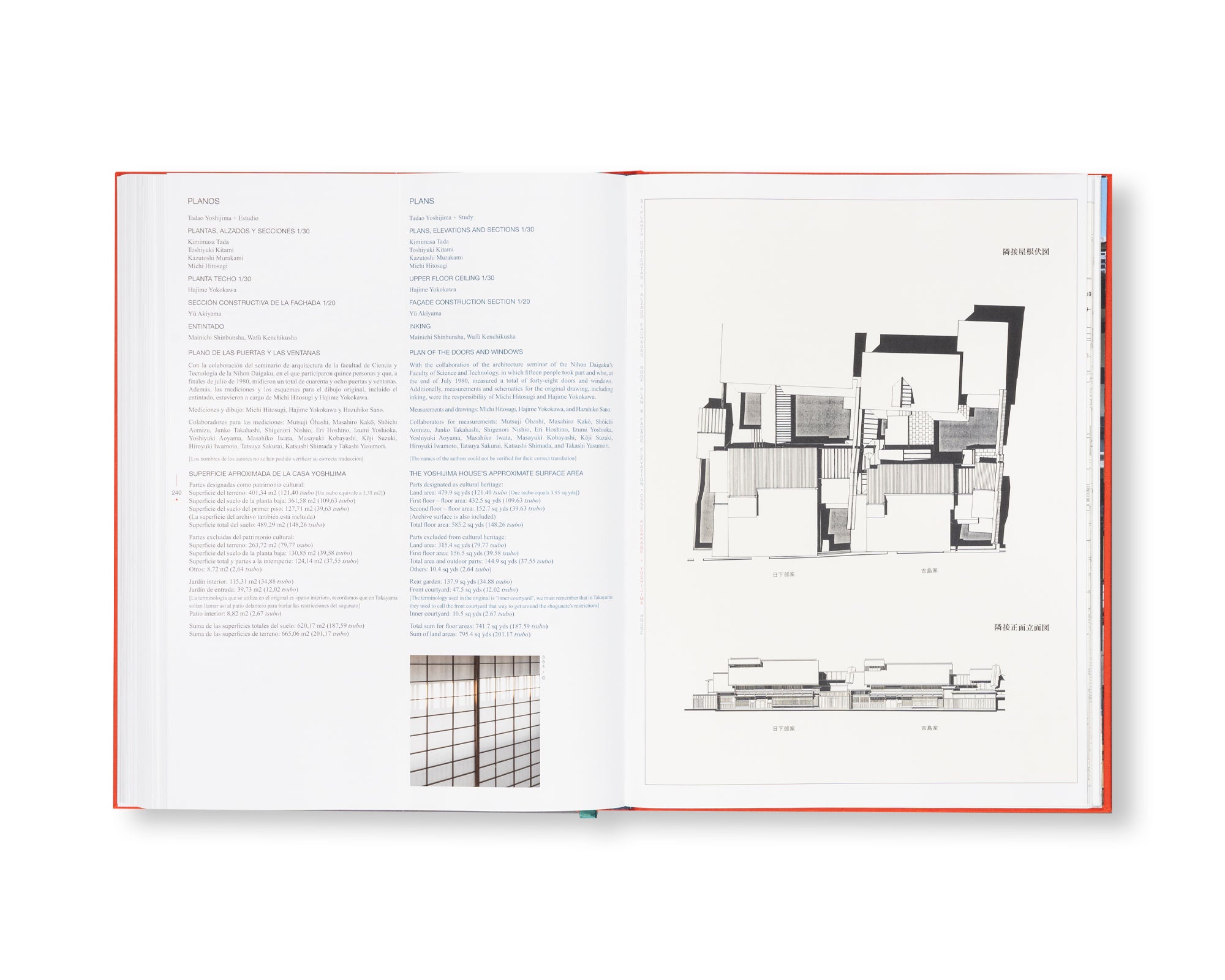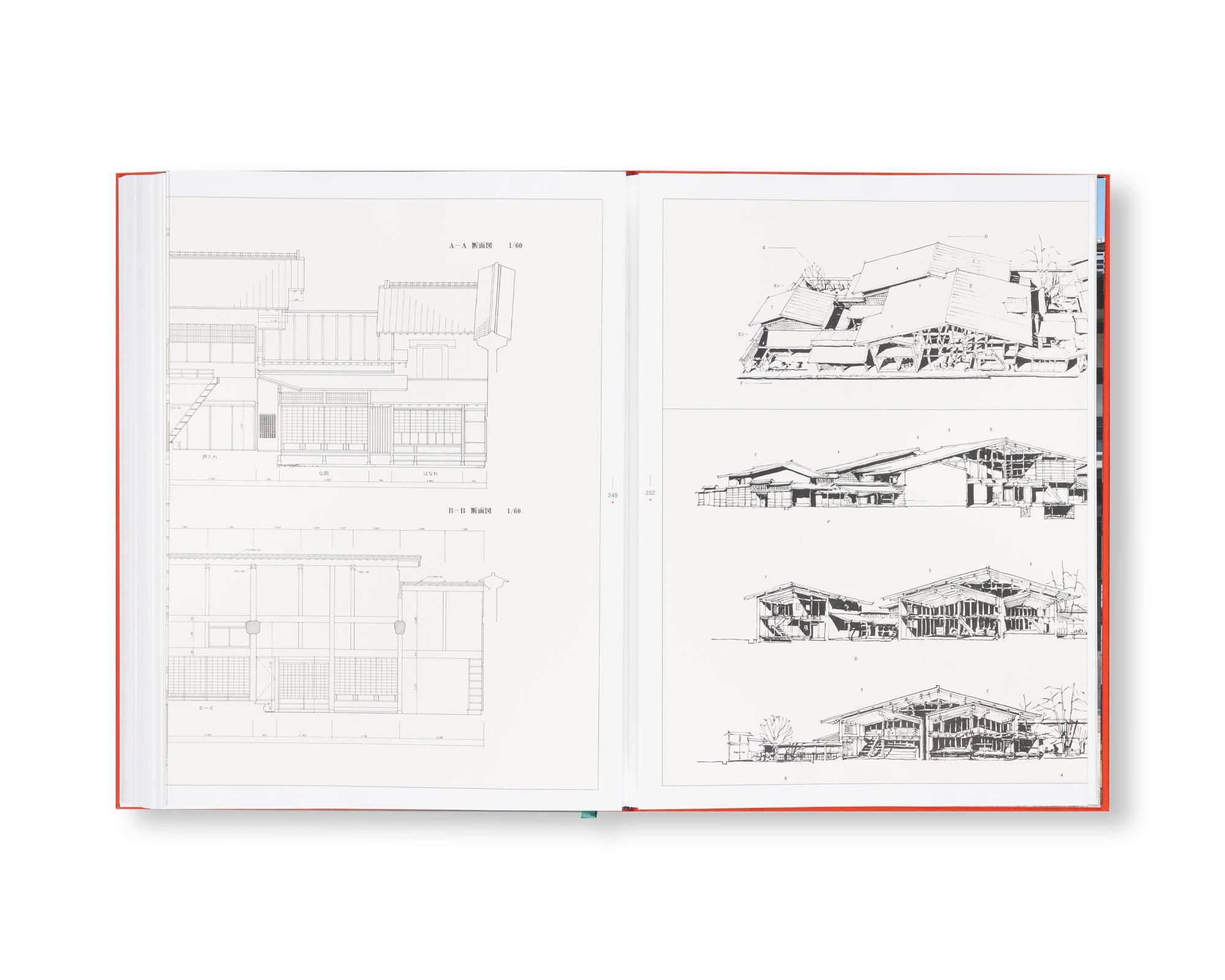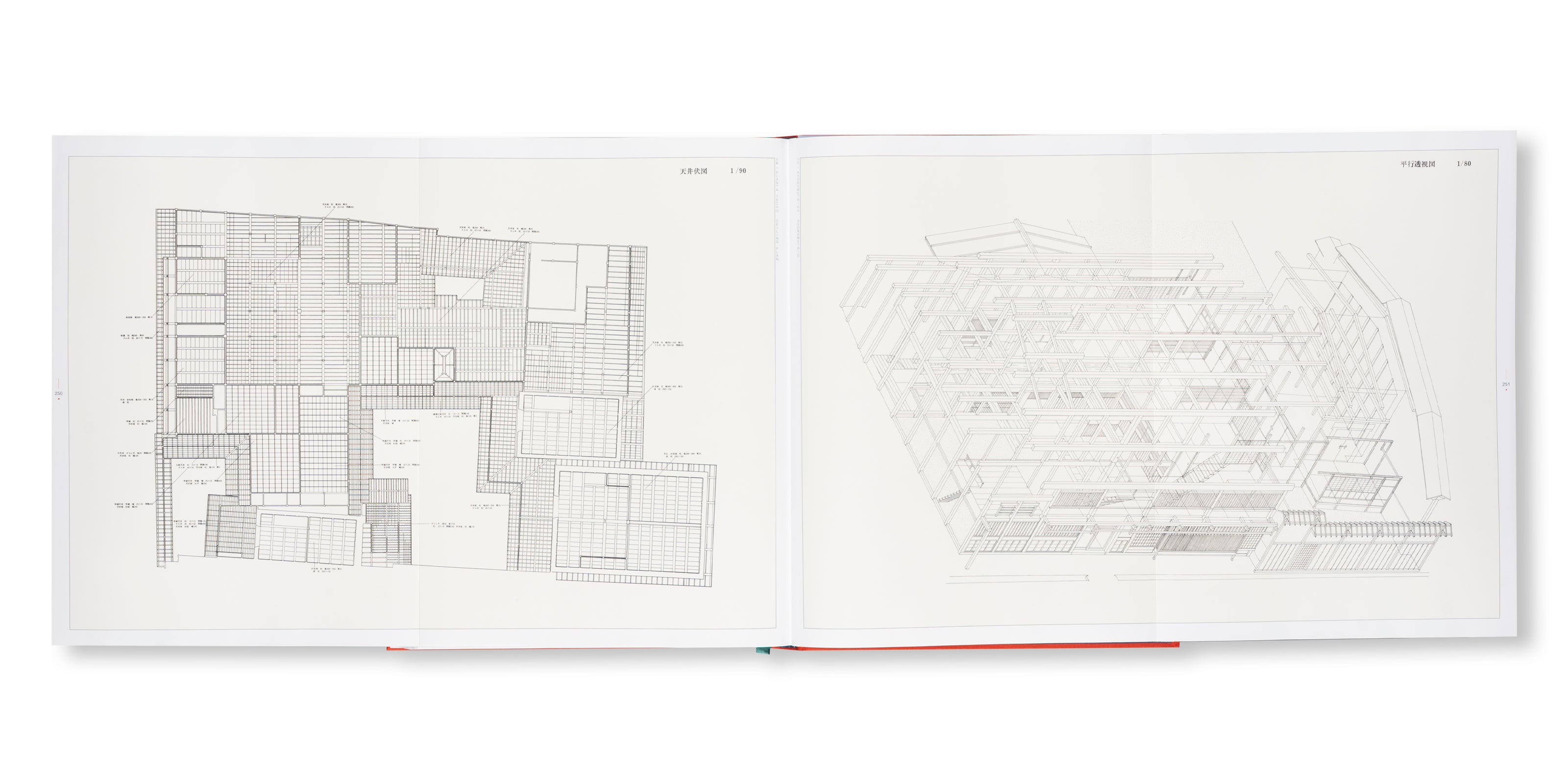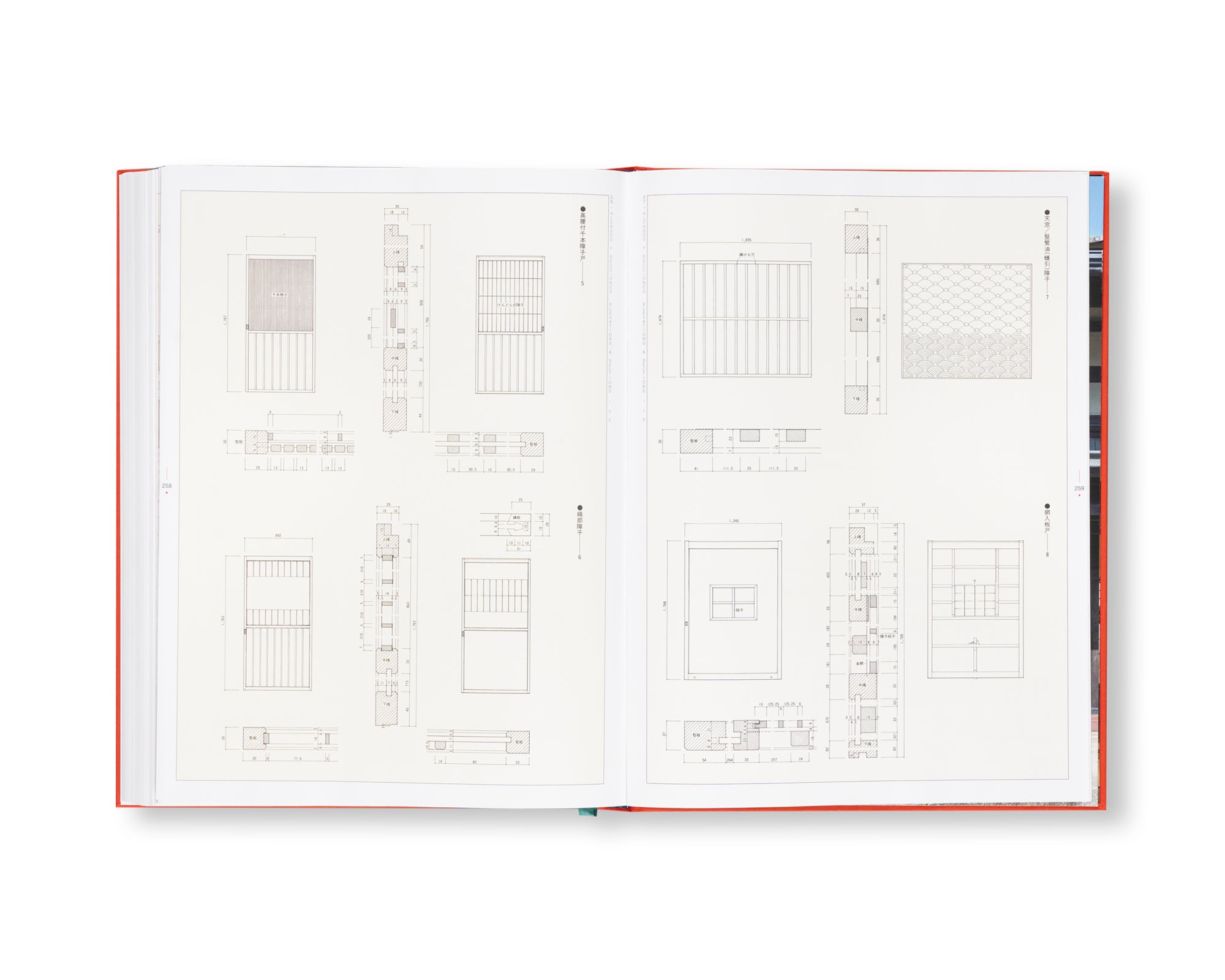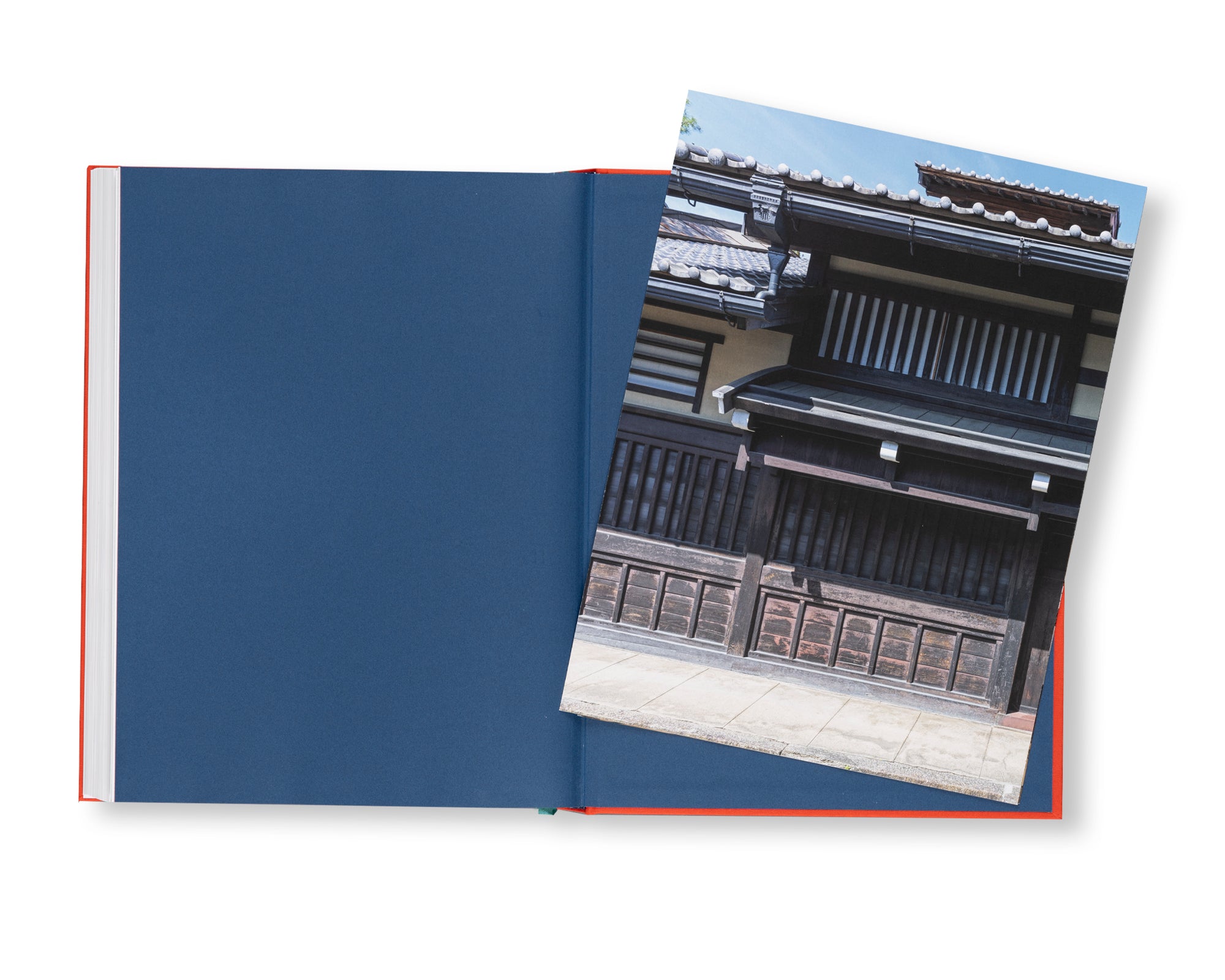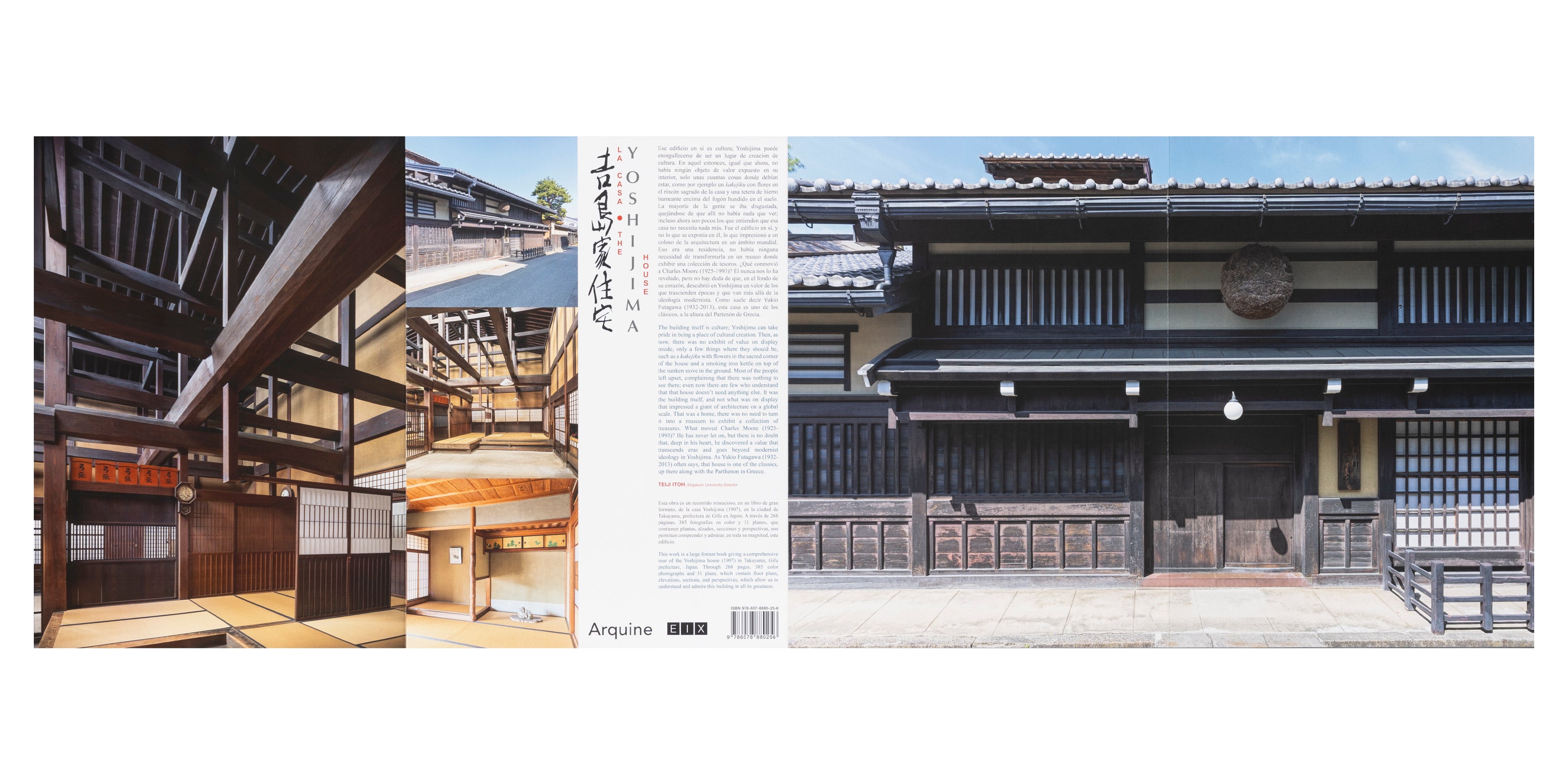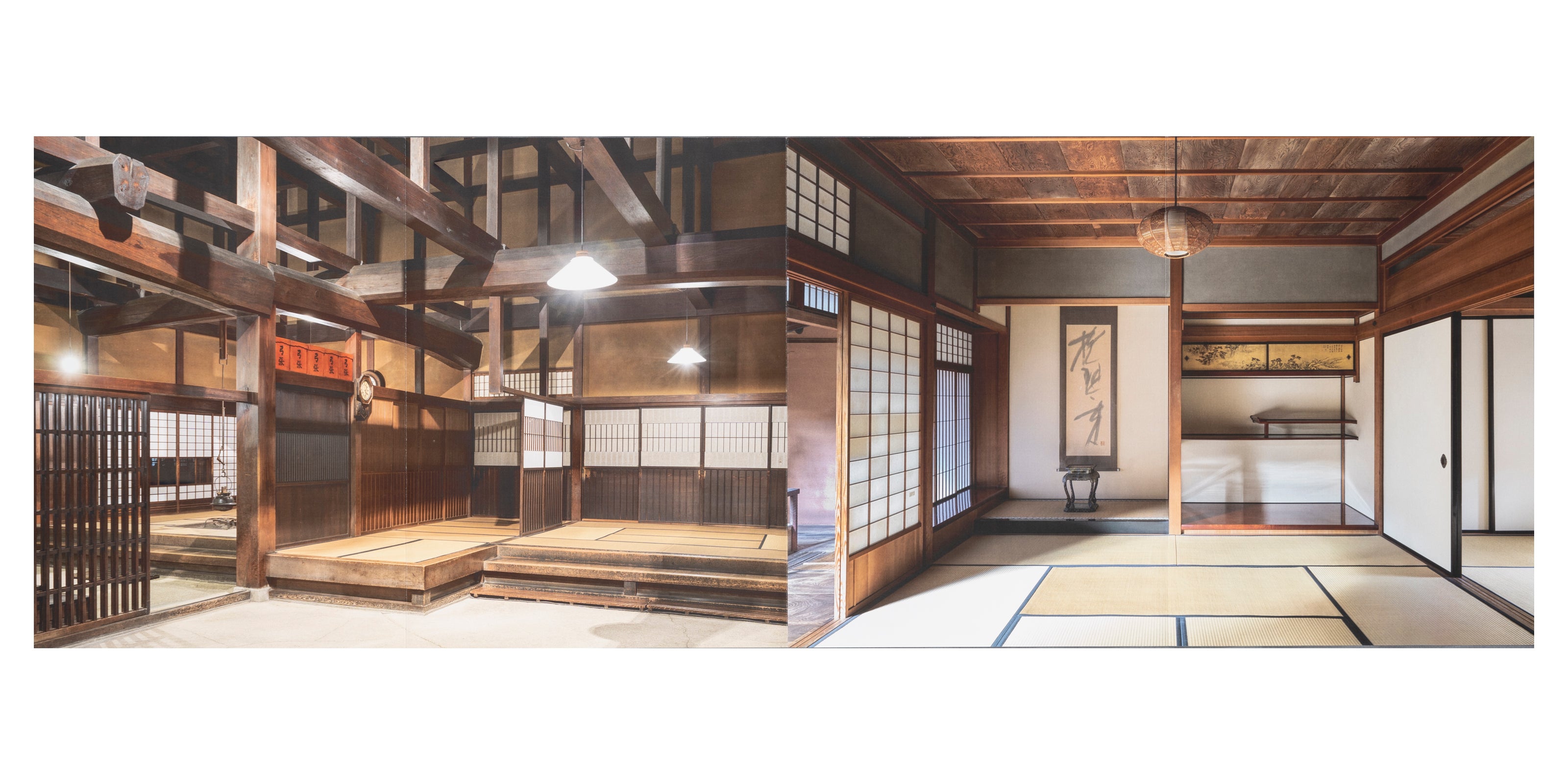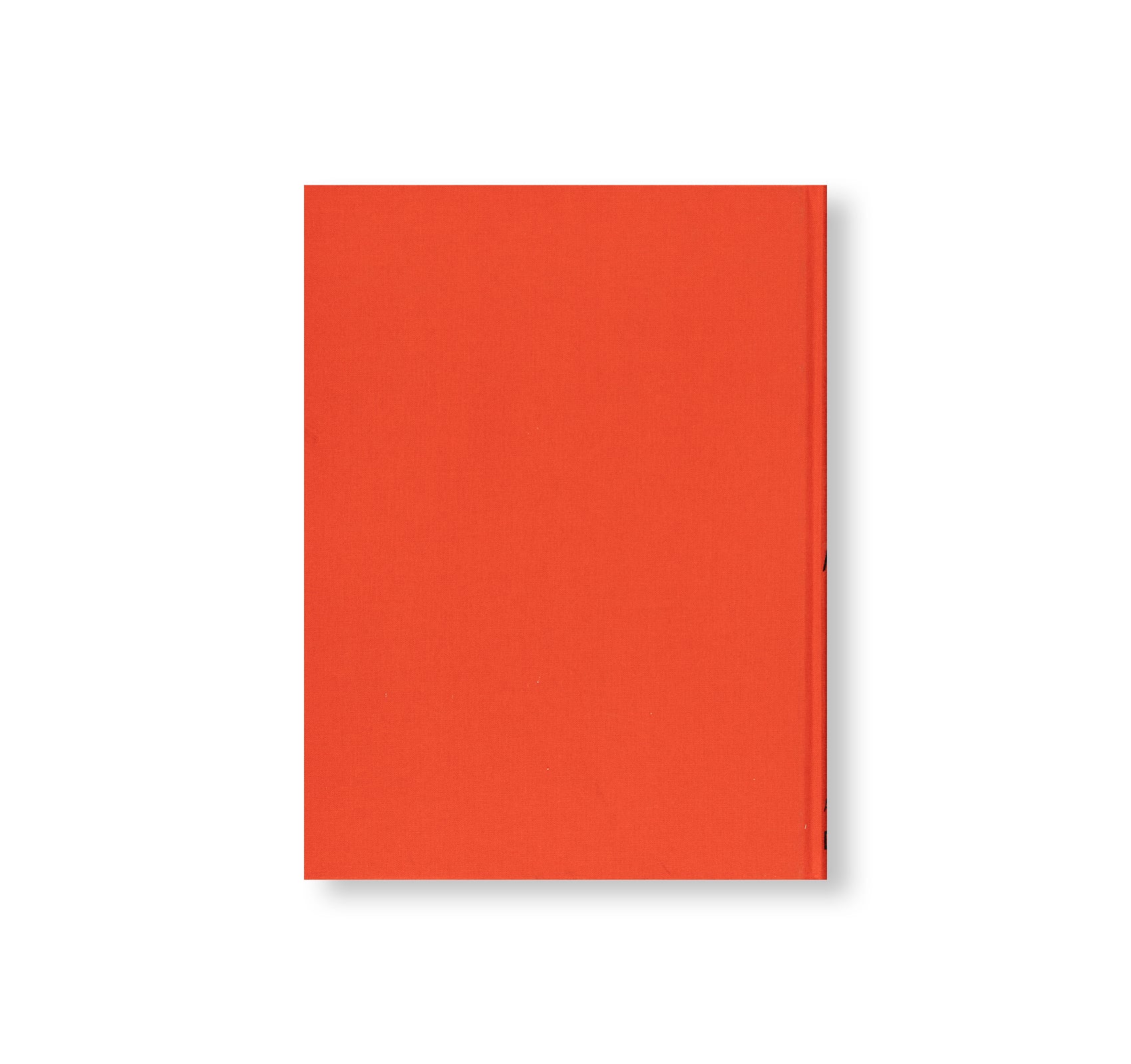LA CASA YOSHIJIMA / THE HOUSE YOSHIJIMA / 吉島家住宅
岐阜県高山市大新町に建つ古民家であり、国の重要文化財に指定されている建造物「吉島家住宅」を紹介する作品集。四代目水間相模に師事した名工・西田伊三郎によって主屋を、内山新造が座敷を担当し、明治40(1907)年に建てられた町家建築である。この住宅は高山で酒造業などを営んでいた豪商・吉島家の住宅として明治8(1875)の大火、明治38(1905)年の類焼ののち、再建されている。
日本の住宅建築において偉大な作品の一つとして数えられるこの吉島邸は、古都・高山で100年以上の時を経て今なお建ち続けている。西田伊三郎を棟梁として建造されたこの住宅は、江戸時代から明治時代にかけて入手が安易になったニレ、アカマツ、ヒノキなどの豊かな木材がふんだんに用いられた。
主屋の各所は多様に異なる機能を持って分けられており、部屋部屋に繋がるように配置された広い土間は、酒造業の店の入り口であり商売が営まれる場所であった。高山の町家において特徴的な室名である「かずき」と呼ばれる8畳の和室は、吉島家が日々の生活や身の回りのことを行う部屋としてあり、また2階は客間を中心として構成され、茶室や仏間もあった。瓦屋根の合間から陽の光が差し込む天窓は室内を明るく照らし、障子や引き戸が穏やかな明かりを取り込んでいる。
20世紀後半になると、日本のみならず国外の建築史家たちは「吉島家住宅」を日本国内の建築の鑑として支持を高めるようになった。アメリカ人建築家のチャールズ・ムーア(Charles Moore)にいたっては、建築誌「新建築」1978年2月号において、「世界を半周して見にくる価値がある」と述べ、日本の建築写真家である二川幸夫はアテネの「パルテノン神殿(Parthenon)」に匹敵する重要性を持つと言わしめた。現在、同住宅は「生ける博物館」として機能を果たしているが、住んでいた人を想起させるようなものは置かれていない。物が無いことによる剥き出しの状態とシンプルさが、この建物の素晴らしい職人技を際立たせている。
本書は、1984年に刊行された『重要文化財 吉島家住宅』(毎日新聞社)をもとにした大型本であるが、オリジナル版と異なる点は、写真家の畑亮夫が手がけたフルカラー図版が385点にも及び、体系的にレイアウトされているという部分であり、まるで一部屋ごとに見学できる完璧なツアーに容易に参加できるかのようである。さらに、そこに6つの観音開き状のページを含む31の建築図面が加わることで、この邸宅の素晴らしさを余すことなく堪能できるのである。
A jewel of Japanese residential architecture, presented through stunning immersive photographs and detailed fold-out plans.
One of the great examples of Japanese residential architecture, the Yoshijima House has stood in the historic old city of Takayama for over 100 years. Built in 1907 after a fire and under the direction of Nishida Isaburo, the complex functioned as a residence for the Yoshijima family, a wealthy merchant household that brewed sake. The builders used luxuriant wood including elm, red pine and cypress: rich materials that were becoming more readily available as the Edo period gave way to the Meiji era.
Different sections of the main building served diverse functions. The large entryway and its adjacent rooms served as the shop entrance and the places in which business was conducted. An eight-tatami room known as a kazuki was where the Yoshijima family went about their daily, personal activities. The building’s second floor was intended for guests and also housed a tea ceremony room and a Buddhist altar. Throughout the Yoshijima House, semitransparent shoji, or sliding doors, allow for gentle filtration of light throughout the rooms, while a skylight in the tiled roof provides greater illumination.
In the latter half of the 20th century, both Japanese and international architectural historians began to champion the Yoshijima House as a paragon of domestic architecture. Charles Moore praised it in the magazine Shinkenchiku, and Japanese building photographer Yukio Futagawa compared its significance to Athens’ Parthenon. Although today it functions as a “living museum,” the Yoshijima House is not stocked with objects that recall its occupants. Indeed, it is this bareness and simplicity that allows the building’s incredible craftsmanship to shine through.
This oversized volume is based on the 1988 book Important Cultural Properties: The Yoshijima House. Unlike that original edition, the 385 full-bleed color photographs by Hata Ryoo are here systematically arranged, facilitating a complete room-by-room tour of the house. Thirty-one architectural plans, including six gatefolds, allow for true appreciation of the building in all its greatness.
Text: Tadao Yoshijima, Teiji Itoh, Chûjiro Hachino, Ryōo Hata, Josep Melo I Valls, Joan Melo Ballester
